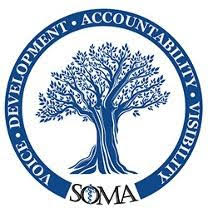› Forums › Fall 2020 Resolution Forum › Resolution: F-20-12: CREATION OF A COMMITTEE INVESTIGATING POLICE CROWD CONTROL VIA EPIDEMIOLOGICAL RESEARCH AND PUBLIC HEALTH CONCERNS
- This topic is empty.
-
AuthorPosts
-
-
October 4, 2020 at 8:55 am #3417
Valerie Lile
Keymaster1 WHEREAS the United States biomedical ethics state that one role of a physician is to weigh the
2 balance of non-maleficence and beneficence; in other words, evaluating risk and benefit of
3 patient care1,2;
4 WHEREAS chemical irritants in tear gas have been shown to cause lung, cutaneous, and ocular
5 injuries, complications in individuals with comorbidities, and even death, resulting in both
6 temporary and permanent injuries4,5,6,7;
7 WHEREAS a grave paucity of epidemiological research on tear gas usage highlights the
8 necessity for further study and the use of counter-methods of crowd control3,4;
9 WHEREAS injuries from non-lethal or “less-lethal” crowd control munitions (e.g., rubber
10 bullets and beanbag…) at protests are documented to cause penetrating facial, thoracic, and
11 ocular trauma; bone fractures and intracranial hemorrhages; conditions necessitating emergency
12 intubation and surgical intervention; permanent disability, and even death8,9,10; now, therefore, be
13 it
14 RESOLVED that SOMA creates a committee titled “Police Crowd Control Research Committee”
15 to (i) investigate current practices and management of police officers utilizing chemical gasses and
16 other “non-lethal” forces on protesters and crowds, (ii) establish an online, nationwide
17 communication channel to assemble data on patients presenting with injuries from crowd-control
18 tactics, in order to inform and coordinate patient care, and quantify the prevalence of these
19 incidences, and (iii) establish a campaign to disseminate the injury and morbidity risks of chemical
20 and munition crowd control methods to the general public, public officials, and police agencies
21 nationwide; and be it
22 RESOLVED that SOMA makes a statement of support for the use of non-projectile, non-
23 chemical crowd control methods by police and other officials, seeing as the use of chemical
24 weaponry and rubber bullets negatively impacts public health; and be it
25 RESOLVED that SOMA acknowledges the negative public health impact of the use of
26 projectile/chemical crowd control by police.Explanatory Statement
The Police Crowd Control Research Committee intends to target a form of police brutality- that crowd control measures are extreme in the United States, along with the militarization of police. We hope that this group may help establish an official policy that SOMA can stand by. The authors hope that this can be a first step in addressing police brutality- by advocating for our patients. The intent of the Police Crowd Control Research Committee is to target common practices of police crowd control. We hope that SOMA could stand by the development of more research towards less harmful crowd control methods that could be utilized to ensure the safety of individuals.
References:
- Askitopoulou H, Vgontzas AN. The relevance of the Hippocratic Oath to the ethical and moral values of contemporary medicine. Part II: interpretation of the Hippocratic Oath- today’s perspective. Eur Spine J. 2018 Jul;27(7):1491-1500. doi: 10.1007/s00586-018- 5615-z. Epub 2018 May 21. PMID:
- Jonsen, A. R., Siegler, M., & Winslade, W. J. (2015). Clinical ethics: A practical approach to ethical decisions in clinical medicine. New York, NY: McGraw-Hill.
- Fraunfelder FT. Is CS gas dangerous? Current evidence suggests not but unanswered questions remain. BMJ. 2000;320(7233):458-459. doi:10.1136/bmj.320.7233.458
- Hu H, Fine J, Epstein P, Kelsey K, Reynolds P, Walker B. Tear Gas—Harassing Agent or Toxic Chemical Weapon? 1989;262(5):660–663. doi:10.1001/jama.1989.03430050076030
- Haar RJ, Iacopino V, Ranadive N, Weiser SD, Dandu M. Health impacts of chemical irritants used for crowd control: a systematic review of the injuries and deaths caused by tear gas and pepper spray. BMC Public Health. 2017;17(1):831. Published 2017 Oct 19. doi:10.1186/s12889-017-4814-6
- Hout JJ, White DW, Artino AR, Knapik JJ. O-chlorobenzylidene malononitrile (CS riot control agent) associated acute respiratory illnesses in a U.S. Army Basic Combat Training cohort. Mil Med. 2014;179(7):793-798. doi:10.7205/MILMED-D-13-00514
- Rothenberg C, Achanta S, Svendsen ER, Jordt SE. Tear gas: an epidemiological and mechanistic reassessment. Ann N Y Acad Sci. 2016;1378(1):96-107. doi:10.1111/nyas.13141
- Drazin D, Shirzadi A, Hanna G, Jeswani S, Ozgur B. Epidural hematoma and surgical evacuation from a bean bag weapon. Am Surg 2012;78(1):E33-E35.
- Olson, KA, Haselden, LE, et al. Penetrating injuries from “less lethal” beanbag munitions. N Engl J Med. 2020; 383:1081-1083. DOI: 1056/NEJMc2025923
- Haar RJ, Iacopino V, Ranadive N, et alDeath, injury and disability from kinetic impact projectiles in crowd-control settings: a systematic reviewBMJ Open 2017;7: doi: 10.1136/bmjopen-2017-018154
Submitted By:
Nadia Addasi, OMS I – NYITCOM
Abdelrahman Abouelnas, OMS I – NYITCOM
Georgianna Stoukides, OMS I – NYITCOM Asad Sheikh, OMS I – NYITCOM
Scott Landman, OMS II – NYITCOM
Yekaterina Okouneva, OMS II – NYITCOMAction Taken: [Leave Blank. Will be Approved by the House of Delegates or Not Approved.]
Date: [Leave Blank. Date submitted to National Vice President and the National Office.]
Effective Time Period: Ongoing
-
-
AuthorPosts
- The forum ‘Fall 2020 Resolution Forum’ is closed to new topics and replies.
